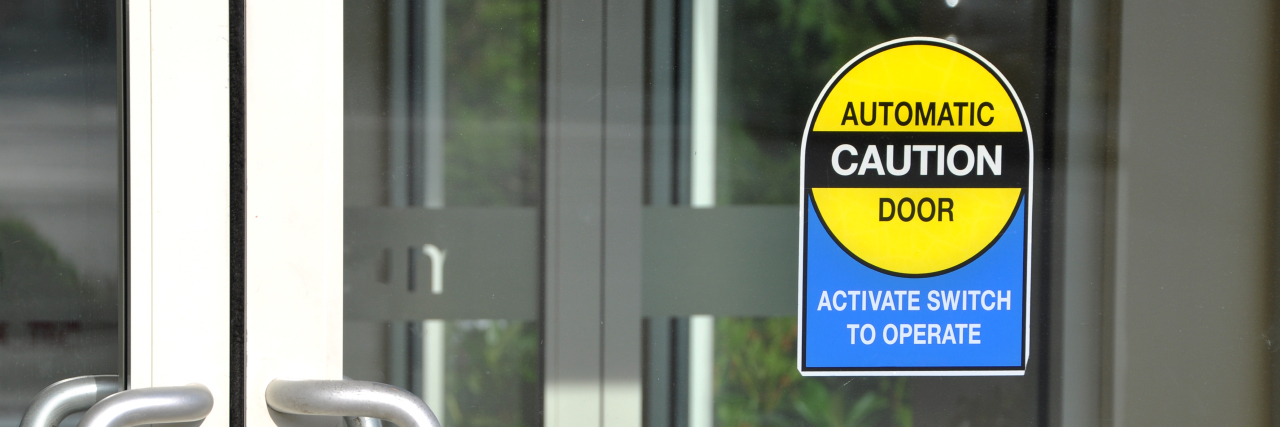My stomach is rumbling and my bladder is ready to burst but I’m relieved that the traffic has dissipated. It is almost 4:00 p.m. and all I have had since breakfast is coffee and water. I’m so hungry that the slushy road reminds me of a smoothie. I see a beacon of hope ahead — a convenience store sign. My stomach and bladder begin to celebrate but as I will soon find out, the celebration is premature.
The clouds are getting darker as I pull into the parking lot and maneuver into a disability parking spot. When I open my door, the wind slams it shut. Usually, I just grab my cane and walk towards the store, but today’s frigid conditions give me second thoughts. A neurological disease that impairs my mobility plus a flare-up of a recurring back problem makes walking in icy conditions precarious. I decide to use my mobility scooter to play it safe.
Bundled up and ready to face the bitter weather, I squeeze the paddle on my scooter and roll towards the door. Just as I get to the entrance, the sky opens up and freezing rain pelts me. I realize I am stuck, staring at a glass door. Where is the &*%$#@! automatic door button? Just as hangry rage is starting to boil, a good Samaritan props open the door. My predicament is over, for now.
Even though the distance to the front door is not far, to someone that has to be cautious about every step, distance takes on a whole new meaning. Add an icy surface to the equation and the threat of a potential nightmare increases.
I decided that enough is enough. A disabled friend turned her frustration concerning the lack of beach access into a successful community improvement project. Through her efforts, the town installed mats at designated beaches providing access to anyone with a mobility challenge.
With her success in mind, I should be able to get “convenience” stores and other commercial entities to install automatic doors. Sure, the interiors of a commercial space are required to comply with the Americans with Disabilities Act (ADA), but what about the entry doors?
Seventy-nine million Americans, about twenty-five percent of the United States population, are disabled in some way. The majority of this group would benefit from an automatic door in addition to people pushing a stroller, recovering from an injury, and/or lacking the strength to pull a heavy door.
Why haven’t the multinational fast-food restaurants (McDonald’s, Dunkin, etc.), convenience stores (7-11, Wawa, etc.), and specialty retail establishments (Five Below, Sherwin Williams, etc.) already taken steps to improve access for their mobility-challenged customers? Shouldn’t these businesses want to cater to customers with physical limitations? Wouldn’t this be a win-win?
Automatic doors cost less than $3,000 fully installed — an inconsequential impact on the billions in revenues these corporations and franchisers collect each year. They should be required for larger businesses just as disability parking spaces are required in the parking lots of commercial establishments. This could be accomplished by amending Article III, Chapter 4, Section 404.3 of the 2010 ADA Standards.
I know I’m not the only one who has stared at a closed entry door thinking, “Just open!” The time is now for including automatic entry doors in the ADA Standards.
Getty image by payphoto.

